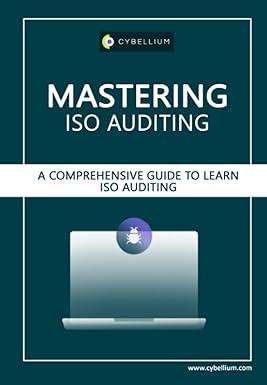Question
Kiwi Cellars has many competitors in the New Zealand domestic premium wine market. The wines are judged similarly in quality & taste although KC employs
Kiwi Cellars has many competitors in the New Zealand domestic premium wine market. The wines are judged similarly in quality & taste although KC employs different production and marketing methods. Dissatisfied with its current profitability, KC management is considering their competitive options. An accounting department analyst compiled the following data for the most recent year to facilitate our analysis. Note: Assume that the company sells what it produces, thus they do not produce wine to hold over in inventory.
|
| KC | Benchmark Competitor |
| Sales price per unit (750 ml bottle) | $8.50 | $8.00 |
| Variable materials (grapes, bottles, etc.) per unit | $2.25 | $2.75 |
| Variable labor per unit | $1.25 | $2.00 |
| Variable production overhead (utilities, etc.) per unit | $1.00 | $1.25 |
| Fixed production overhead (depreciation, etc.) | $750,000 | $250,000 |
| Marketing, administrative and other fixed costs | $250,000 | $150,000 |
| Last years sales in units | 350,000 | 400,000 |
| Capacity in units | 500,000 | 450,000 |
1. Determine the contribution margin per unit, contribution margin ratio and break-even points for KC and its benchmark competitor.
Interpret what these numbers mean.
2. Calculate operating leverage for the two firms based on last years sales and interpret its meaning in this context.
How does this relate to Kiwis realized demand experience?
3. Prepare a simple contribution margin income statements for the two firms.
Step by Step Solution
There are 3 Steps involved in it
Step: 1

Get Instant Access to Expert-Tailored Solutions
See step-by-step solutions with expert insights and AI powered tools for academic success
Step: 2

Step: 3

Ace Your Homework with AI
Get the answers you need in no time with our AI-driven, step-by-step assistance
Get Started


